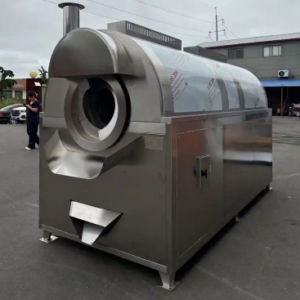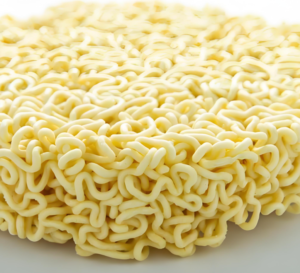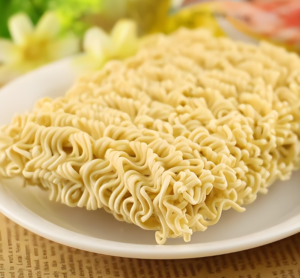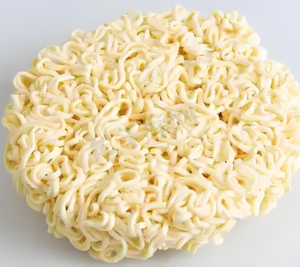<h1>How to Maintain Millet Strip Equipment Effectively</h1>Introduction
Kurkure equipment plays a crucial role in the food processing industry, particularly for producing puffed millet snacks and other grain-based products. Proper maintenance ensures optimal performance, extends equipment lifespan, and maintains product quality.
kurkure making machine
ToggleThis article provides a comprehensive guide for B2B professionals in foreign trade and manufacturing, covering essential maintenance practices. By following these steps, you can minimize downtime, reduce costs, and enhance operational efficiency.
Understanding Millet Strip Equipment
Millet strip equipment typically includes machines for extruding, drying, and packaging millet strips, which are popular in global markets for their nutritional value. These devices involve components like extruders, heaters, conveyors, and control panels.
Regular maintenance is vital because these machines operate under high temperatures and pressures, making them susceptible to wear and tear. Understanding the key parts helps in identifying potential issues early, ensuring smooth production cycles.
For businesses exporting millet products, well-maintained equipment meets international standards, such as ISO certifications, boosting credibility in foreign trade.
The Importance of Regular Maintenance
Maintenance goes beyond routine cleaning; it prevents breakdowns that can halt production and lead to financial losses. In the competitive B2B landscape, reliable equipment supports consistent output and customer satisfaction.
Neglecting maintenance can result in contamination risks, affecting food safety and compliance with regulations like FDA or EU standards. This is especially critical for exporters dealing with millet strips, where hygiene is paramount.
Moreover, proactive maintenance improves energy efficiency, reducing operational costs. Studies show that well-maintained machinery can cut energy use by up to 20%, providing a significant edge in global markets.
By scheduling regular checks, companies can extend equipment life by several years, making it a smart investment for long-term business growth.
Step-by-Step Maintenance Guide
Daily Maintenance Routines
Start each day with a quick inspection to keep millet strip equipment in top condition. Begin by checking for visible dirt or residue on extruders and conveyors, as buildup can affect product quality.
Wipe down surfaces with food-grade cleaners to prevent bacterial growth. Ensure all safety guards are in place and test control panels for any error messages.
Lubricate moving parts, such as bearings, lightly if needed, but avoid over-lubrication to prevent attracting dust. This simple routine can take just 15-20 minutes and significantly reduces the risk of minor issues escalating.
Weekly Maintenance Tasks
Once a week, perform a deeper clean on millet strip equipment. Disassemble accessible parts like nozzles and screens, then clean them thoroughly with approved solvents to remove any stubborn residues.
Inspect belts and chains for signs of wear, such as cracks or loosening, and tighten or replace them as necessary. Check heating elements for even operation, ensuring temperatures align with manufacturer specifications.
Test the equipment’s calibration to maintain consistent strip sizes and textures, which is essential for meeting export quality standards. Document these checks in a maintenance log for traceability.
Monthly Maintenance Procedures
At the end of each month, conduct a comprehensive inspection of millet strip equipment. Examine electrical connections for corrosion or loose wires, which could cause malfunctions during high-volume production.
Measure and adjust alignment of components like extruder screws to ensure precise operation. Use diagnostic tools to monitor vibration levels, as excessive vibrations indicate potential mechanical failures.
Replace filters and seals proactively, even if they appear functional, to avoid contaminants entering the production line. This level of maintenance helps in sustaining efficiency and complying with international trade regulations.
Engage trained technicians for these tasks to guarantee accuracy and safety, especially in B2B settings where equipment downtime impacts supply chains.
Annual Maintenance and Overhauls
Schedule an annual overhaul for millet strip equipment to address long-term wear. This involves dismantling major components for thorough cleaning and inspection by certified professionals.
Replace worn-out parts, such as motors or heaters, based on usage data. Perform load tests to verify the equipment’s capacity under simulated production conditions.
Update software and firmware if the equipment includes digital controls, enhancing precision and integrating with modern IoT systems for remote monitoring. Such overhauls can prevent costly repairs and extend equipment life by 5-10 years.
For exporters, annual maintenance ensures equipment meets evolving global standards, supporting seamless trade operations.
Common Problems and Troubleshooting Solutions
Millet strip equipment may encounter issues like inconsistent extrusion, which often stems from worn screws or improper temperature settings. To troubleshoot, adjust heaters gradually and inspect for blockages.
Overheating is another frequent problem, typically caused by faulty thermostats or poor ventilation. Clean vents and replace sensors if needed to restore normal operation and prevent damage.
Electrical faults, such as sudden shutdowns, can arise from power surges. Use surge protectors and regularly check wiring to mitigate these risks, ensuring uninterrupted production for B2B clients.
Moisture buildup might lead to product spoilage; address this by improving drying processes and maintaining humidity controls. Quick troubleshooting minimizes losses and maintains export-quality output.
Safety Tips for Maintenance
Safety should always be a priority when maintaining millet strip equipment. Always disconnect power sources before starting any work to avoid electrical hazards.
Wear appropriate protective gear, such as gloves and goggles, to protect against hot surfaces and chemicals. Train all staff on emergency procedures and equipment-specific risks.
Ensure the workspace is well-ventilated and free of clutter to prevent accidents. For B2B operations, comply with OSHA or equivalent standards to safeguard workers and avoid legal issues in international trade.
Regularly review safety protocols and conduct drills to keep everyone prepared, fostering a culture of prevention in your facility.
Best Practices for Equipment Longevity
To maximize the lifespan of millet strip equipment, adopt a preventive maintenance schedule tailored to your production volume. Integrate predictive tools, like sensors, to monitor performance in real-time.
Source high-quality replacement parts from reputable suppliers to maintain original standards. Train your team on proper usage to reduce operator-induced wear.
Incorporate eco-friendly practices, such as using biodegradable cleaners, to align with global sustainability trends in food processing. This not only extends equipment life but also enhances your brand’s appeal in foreign markets.
Finally, partner with equipment manufacturers for ongoing support, including training and upgrades, to stay ahead in the competitive B2B sector.
Frequently Asked Questions
Below are common questions from professionals in the millet processing industry.
What is the ideal frequency for lubricating millet strip equipment?
Lubricate moving parts daily or as specified by the manufacturer, using food-grade lubricants to prevent contamination and ensure smooth operation.
How can I detect early signs of equipment failure?
Monitor for unusual noises, vibrations, or performance drops; use diagnostic tools for regular checks to catch issues before they escalate.
Is professional servicing necessary for annual maintenance?
Yes, certified technicians should handle annual overhauls to ensure compliance with safety standards and optimal performance.
What role does maintenance play in export compliance?
Proper maintenance helps meet international food safety regulations, reducing the risk of recalls and enhancing product reliability in global trade.
How do I choose the right cleaning agents for the equipment?
Select agents that are non-abrasive and approved for food contact to avoid residue buildup and maintain hygiene without damaging components.
In conclusion, maintaining millet strip equipment is essential for efficient operations, cost savings, and sustained success in the B2B foreign trade arena. By implementing the strategies outlined above, such as routine inspections, troubleshooting, and safety measures, businesses can achieve reliable performance and high-quality output. Prioritizing maintenance not only prolongs equipment life but also supports compliance and competitiveness in the global market, ultimately driving long-term profitability.








